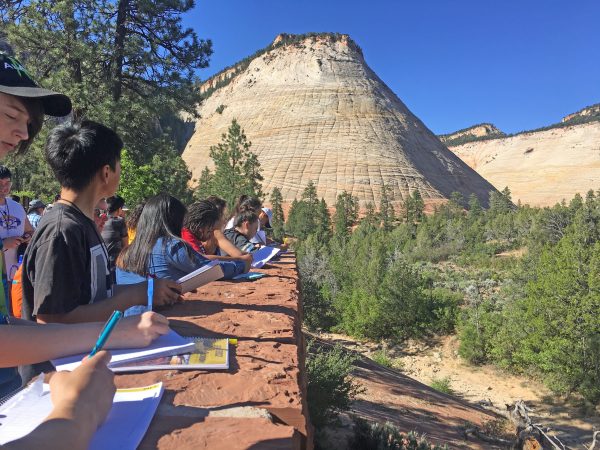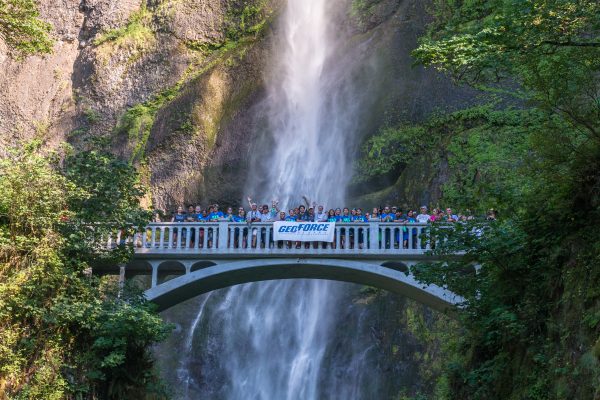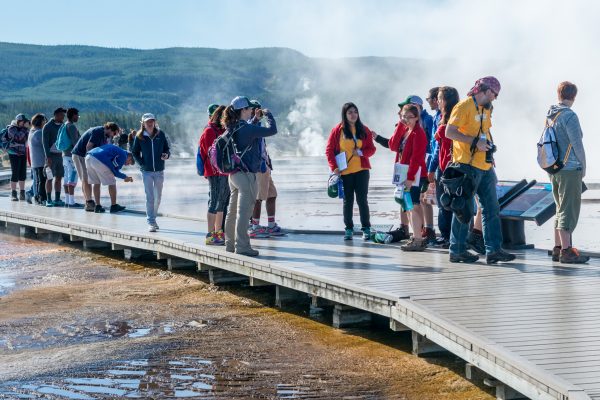GeoFORCE seeks students from rural Interior Alaska
July 31, 2017
Meghan Murphy
907-474-7541

A University of Alaska Fairbanks program that brings rural high school students on geological field trips across the state and nation during the summer is looking for students from Interior Alaska.
GeoFORCE Alaska received a $200,000 grant from the National Science Foundation to expand its recruiting from the North Slope and Northwest Arctic boroughs to include rural schools in Interior Alaska, primarily those off the road system.
The funding will also support a new group of rising ninth- and 10th-graders who can begin the program next summer.
"What that means is we can recruit a new group this year and start them in summer 2018 instead of waiting two more years,” said Sarah Fowell, GeoFORCE Alaska director.
UAF’s College of Natural Science and Mathematics hosts GeoFORCE Alaska, which is now in its sixth year. The college preparatory program aims to interest Alaska rural and minority students in the sciences by bringing them on weeklong geology field trips throughout high school. UAF and industry geologists teach the program, and students learn geology at the college level.
GeoFORCE Alaska began in 2012, and 18 students from the North Slope Borough graduated from the program in 2015. GeoFORCE Alaska expanded the program in 2016 with a new cohort of more than 30 students from the North Slope and the Northwest Arctic boroughs.
Until now, Fowell said, the program lacked enough funding to recruit in rural Interior Alaska and start a new group every two years instead of four.

“The program receives in-kind support from UAF, but funding comes entirely from industry sponsors, grants and donations,” Fowell said. “Funding from NSF allows us to offer the GeoFORCE experience to all interested students across a broader portion of the state.”
Fowell said students starting the 2018 summer academy will spend one week each consecutive summer over the course of four years exploring the geology of the different geographic regions of Alaska, the American Southwest, the Pacific Northwest and the Rocky Mountains.
Students will also have the opportunity to make friends, work in teams and develop knowledge and skills that may be relevant to their communities.
“There are a lot of undeveloped resources in Alaska,” she said. “And these students are very well suited to consider the cultural, geologic and financial impacts of different development plans near their communities and perhaps come up with a plan that's best for the community as a whole.”
Sylvia Hutchinson, the GeoFORCE AK coordinator, said the program also aims to help these students learn that they can succeed in college.
“GeoFORCE AK allows us the chance to form long-term relationships with the students in this program and offer support throughout their entire high school journey," said Hutchinson. "We’re able to provide resources in the form of academic advice, study tips, industry contacts, internship recommendations, help with college admission applications and housing options. We’re happy to help in any way that eases the transition from high school to college."

Hutchinson said 94 percent of the students in the first cohort graduated from high school, and 67 percent enrolled in college. Of these, 83 percent chose majors in the math, sciences and technology fields.
Hutchinson will reach out to eighth- and ninth-grade teachers and students this fall but said that interested students, parents and teachers can find more information on geoforce.alaska.edu.
ADDITIONAL CONTACT: Sylvia Hutchinson, 907-474-5313, sjhutchinson3@alaska.edu
VIDEO: https://vimeo.com/129492268
ON THE WEB: geoforce.alaska.edu


